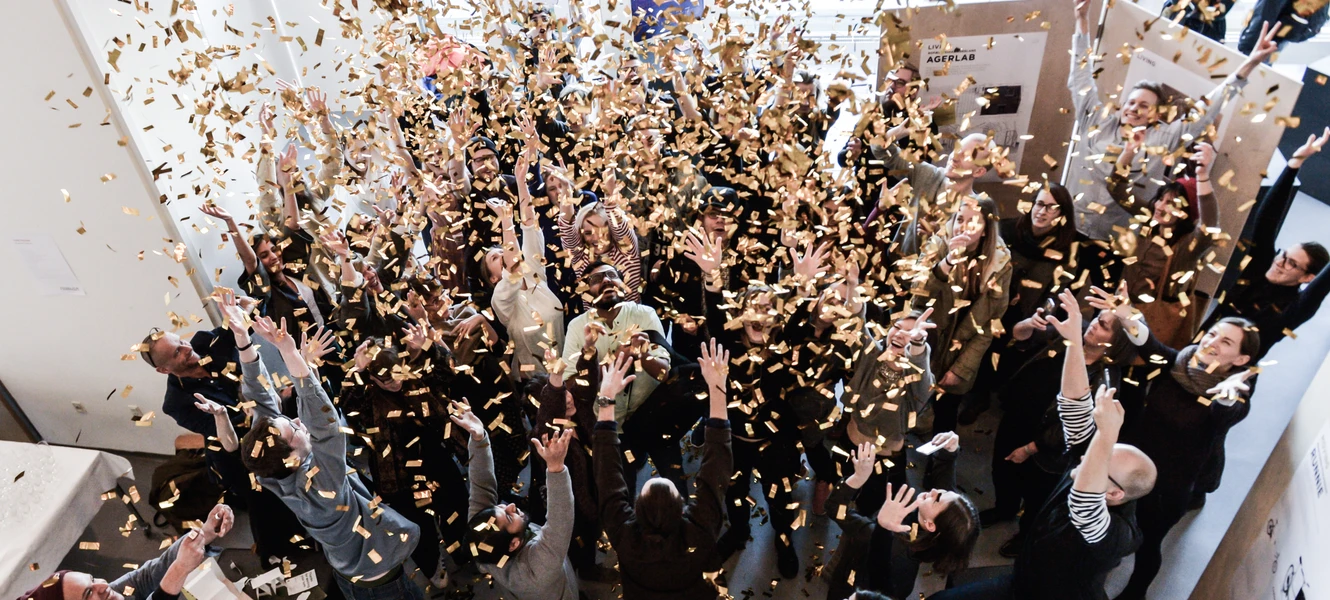
Design that sustains
On Friday 20 January, the two-week intense design process culminated, when 50 Camp students from top design schools across the world revealed their sustainable solutions at Kolding School of Design. Small, to the point films, posters and prototypes presented the student solutions to challenges formulated only days before with collaborating partners.
Public-private partnership
One of the groups designed a solution for Kolding Municipality that focuses on reusing building materials. The local government does an excellent job sorting and organizing used building materials but want to focus on what comes next: sales, distribution, etc. The solution ”Stark Mere” (”Stark More”) is a store-in-store-concept and opens up to a unique partnership between a public authority, Kolding Municipality, and a huge private player, DT Group, which is the largest retailer and distributor of building materials in the Nordic region. Hanne Madsen and Mia Skovgaard from Kolding Municipality says that the students have openend a door to them that they will definitely walk trough. Also to Wasif Hussain, design student from Pakistan and co-creator of the "Stark Mere" solution, believes the camp and the collaboration have been a success:
"It has been a fantastic experience. We have become great at pitching our ideas and solutions to non-designers, and to me, it has been a real experience to witness first hand the Danish, democratic design process unfold.”
As Shahmir Khan, also from Pakistan, says: ”The DesignCamp is just filled with small insights that make a person a better designer.”
No more food waste
Supermarket REMA 1000 received a design soution that is instantly scalable and realisable: an awareness campaign that focuses on how to reduce food waste. On average we throw away 30 per cent of the foods we buy. That means that every time you spend 100 pounds on groceries, you waste 30 pounds. The students’ solution focuses on visualising this expected food waste using receipts and shopping bags. The manager of the local REMA 1000 store, Espen Sørensen, is very pleased with the students’ efforts: "The fact that they are able to visualise the idea makes it much more accessible and easier to implement.”
We create new ways of designing
Barnabas Wetton is long-time teacher and facilitator of the DesignCamp, and there is no doubt in his mind that the Camp makes a real difference:
"One of the things that is genuinely great about Kolding School of Design is that we actually try in reality to do what we say we want to do: We want to form partnerships to understand new ways of designing and designing into new paradigms. This is what this is about. We’re trying to do this. And we’re also trying to engage with a global world and that’s an ambitious thing too because cultures are different and Denmark doesn’t really have an idea of how strange it is until you start seeing it through Indians and Americans and all the other people."
Combining sustainability with design methods of research, ideation, prototyping, etc., the students have designed anything from structure and spaces to actions, experiences and identity; design concepts that are ready to be taken to the next level.
Partners
Kolding Municipality, including Nicolai Cultural Complex, Kolding Language School, Børnehaven Løvetand (kindergarten) and Brændkjærskolen public school. Also participating are energy supplier EWII, Kolding Food Aid, Responsible Procurement, REMA 1000 supermarket and the Agerland Commune.
DesignCamp2017 is organised in collaboration between Kolding School of Design, D2i - Design to innovate, Syddansk Vækstforum, TREFOR and the EU Social Fund.
“It has been a fantastic experience. We have become great at pitching our ideas and solutions to non-designers, and to me, it has been a real experience to witness first hand the Danish, democratic design process unfold.” Wasif Hussain”


